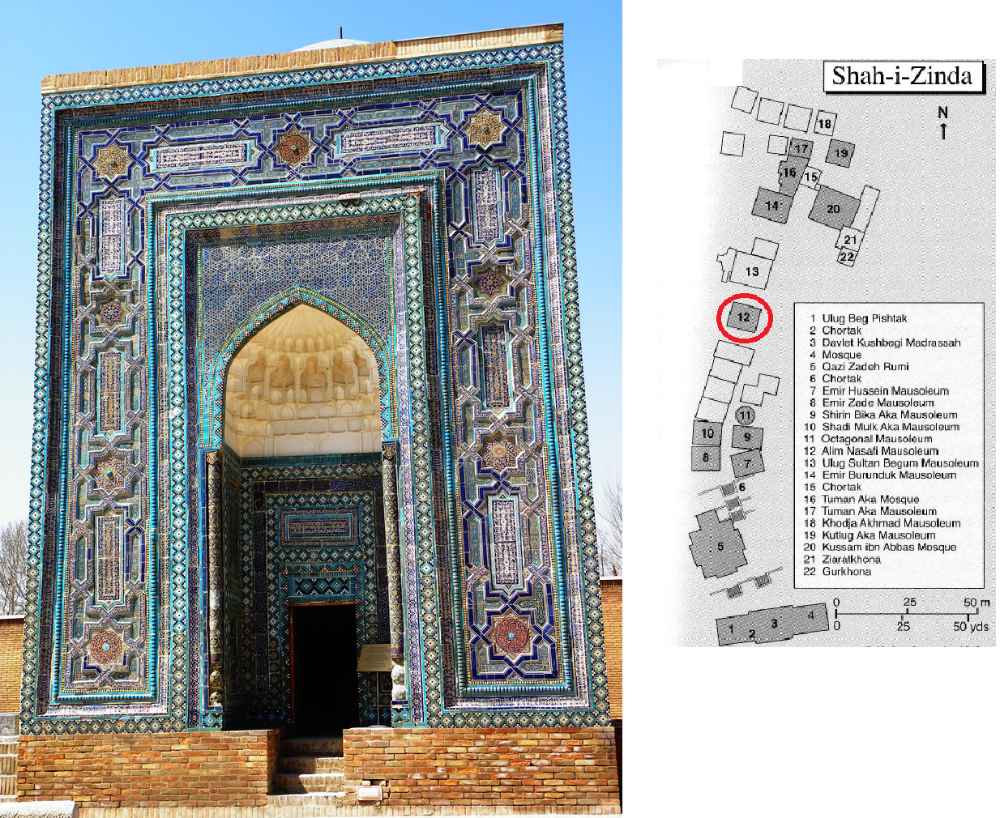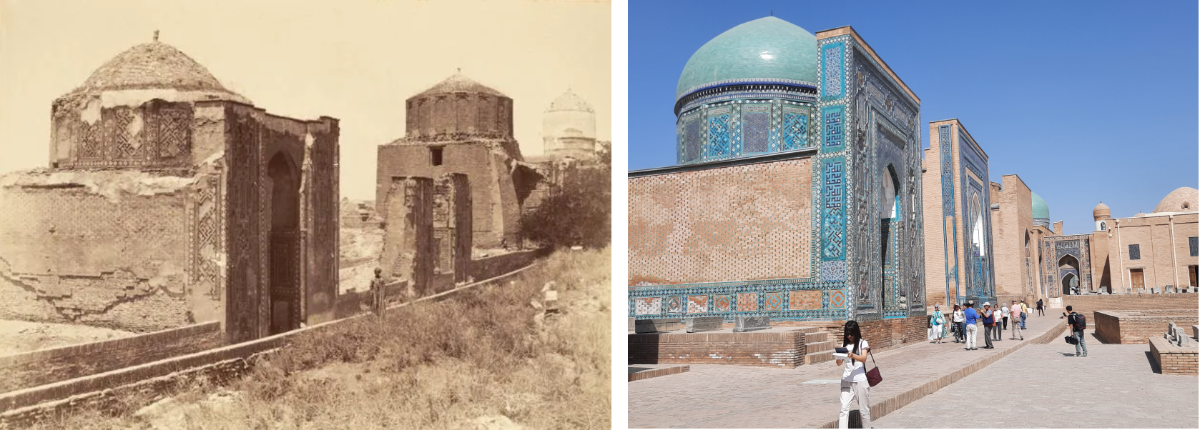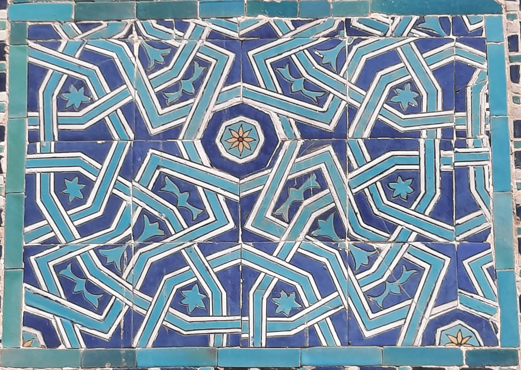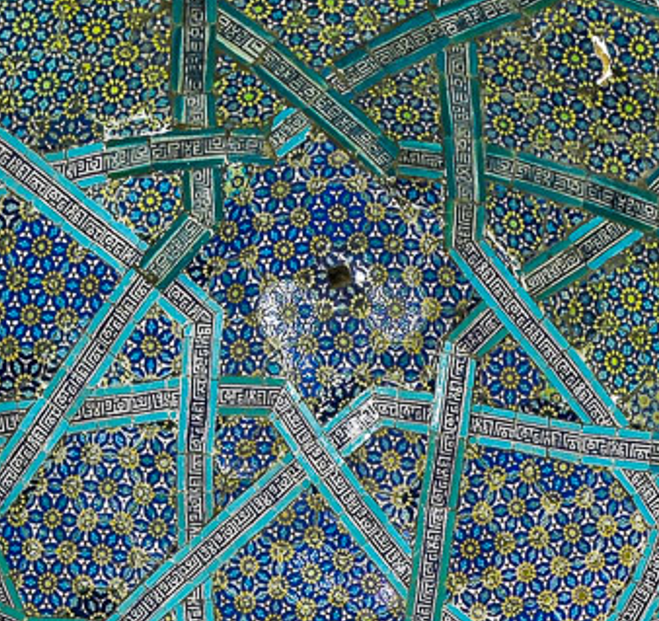12 Alim Nasafi Mausoleum
The Alim Nasafi mausoleum is situated halfway the Shah-i-zinda. Despite its designation as the "Ali Nasafi tomb", nothing is known of who was buried here and what relation (if any) they had to the royal family of Timur. The present name of the tomb is taken from an inscription at the base of the door jamb within the pishtaq, which attributes the tomb's construction to a certain ostad (master artisan) Ali Nasafi, whose surname indicates the likely hometown of Karshi in what is now central Uzbekistan. Although not included in the tomb's present name, another ostad named Ali Tuki-kub left his signature on the opposite side of the door jamb in the same position. In the absence of further information, it is reasonable to assume that the two masters were equal participants in the execution of the tomb, as they both used the same titles (ostad) and inscribed their names in similar locations on opposite sides of the entrance.

The muqarna above the entrance is left white because when the mausoleum was restaurated it was lacking without any clue of it. The pictures below 'before-and-after' show the restauration was indeed 'hard', and restores took the initiative to fill in much by themselves. Notice on the picture left that the exterior dome had been collapsed leaving alone the interior dome standing.
It might not be a surprise that during such hugh restauration works some tiles were exchanged. You can clearly see that in the upper narrwow row two tiles were exchanged.


Despite the collapse of the outer dome the inner one kept standing, protecting the interior and we're very lucky with this. The inner dome has a fine geometric decoration. The widened lines of it bear texts in kufic writing. The polygons within the line patterns are filled with a pattern on an isometric grid. You can read more about decorations on curved surfaces in domes.
The transition from a square base to an octagonal sustain for the dome was made by muqarnas in the four corners of the mausoleum.

